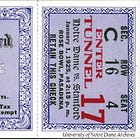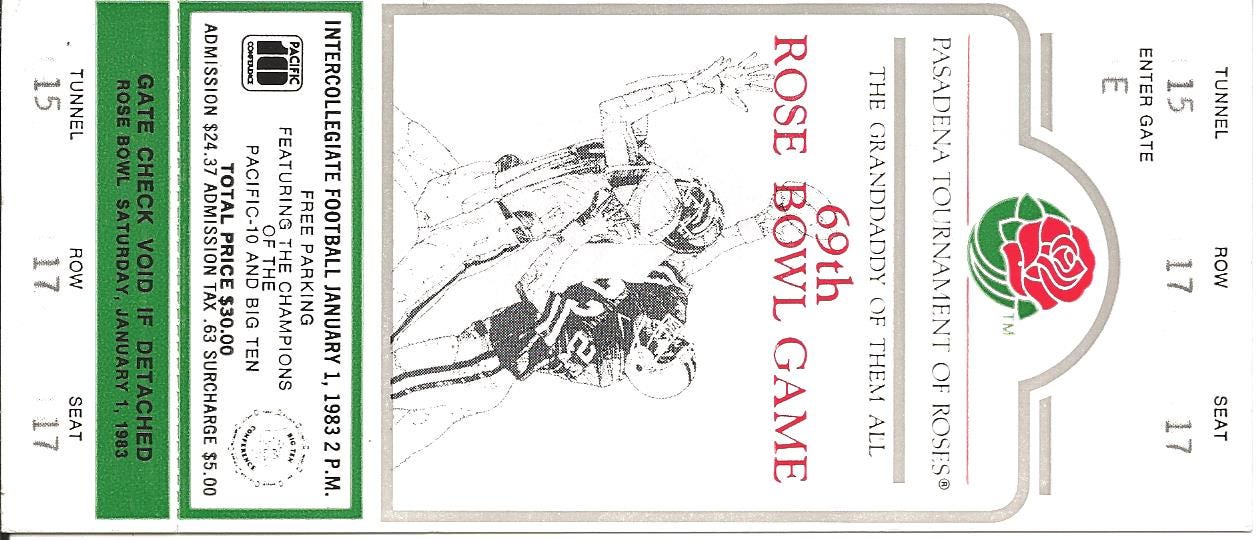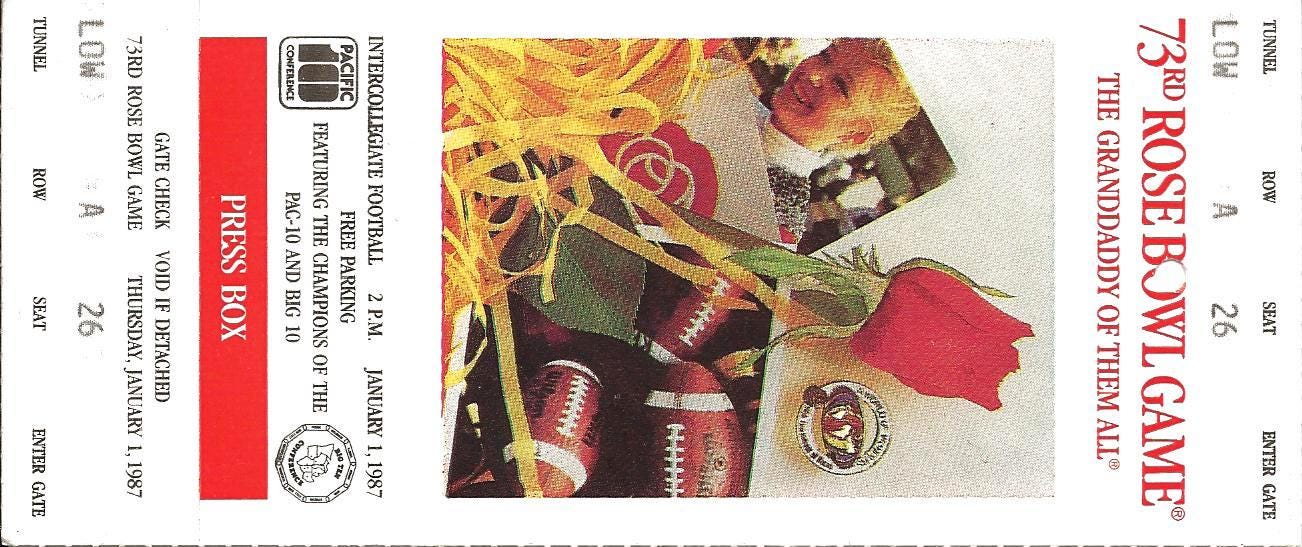A History of Rose Bowl Tickets (1945-1987)
This post is the second of a three-part series. Please read part one before continuing.
After the war, the tickets returned to the currency style with some variations. The 1952 included a second stub for the 25-cent contribution to the U.S. Olympic Fund. In 1940, 1948, and 1952, the NCAA asked member schools to solicit 25-cent donations from ticket buyers for one game per sport to subsidize the cost of sending teams to the competition. The Rose, Orange, and Cotton Bowls each included a “voluntary” contribution to the ticket’s selling price.
The 1956 ticket clung to the currency style and was unremarkable. However, the version shown below is a Press Box ticket. A message is stamped on the right side, “WOMEN AND CHILDREN NOT ADMITTED TO PRESS BOX.” Did I mention that tickets reflect their times?
The currency style ended with a dramatic fashion break in 1957 as Mid-Century Modern-ish came to the fore, followed by an innovation in printing technology in 1958 when the ticket included a photographic image for the first time.
Tickets from 1965 to 1972 saw renderings of imaginary Rose Bowl queens and football players, all drawn in a 1960s commercial art style.
The 1970s largely followed that trend but took a detour with the hideous 1975 ticket, followed closely by its bicentennial sibling in 1976.
A sense of normality returned to the Rose Bowl tickets, but ugly came back from 1983 to 1987 when the printers added seat locations using dot matrix or similar low-quality printers. Perhaps they considered such printing technologically advanced and au modern, but it might have been moer fitting to print the tickets on green bar paper.
Notice: Substack is, first and foremost, an email newsletter platform, so it limits the size of posts, especially those with images. This story will be continued tomorrow.
Football Archaeology is reader-supported. Click here to buy one of my books or otherwise support the site.















What awesome and beautiful artwork went into these. Too bad these ticket stubs are a thing of the past, they are great expressions or art.